
What's the best way to get inside your opponent's head? Find out what they eat. Merguez anyone? World Cup is on and the American's have a crucial test against Algeria tomorrow. So will the play be spicy? Let's find out.
I looked at a bunch of recipes and I concluded a good Merguez is just lamb and harissa. Harissa is a condiment of peppers garlic and spices used throughout Northern Africa (referred to by some as the Mahgreb).

For the Harissa I re-hydrated some dry red peppers, crushed some garlic,

And toasted some spices.
Everything went into the blender with some olive oil and some water and presto!

Harissa.
Here's the quantities:
10g (25-30) small dry red peppers
12g 2T whole coriander
12g 2tsp whole cumin
24g 4 cloves of garlic
1/2 cup 200 ml EV Olive Oil
Cold Water as needed.
The peppers. For better flavor you can toast them in a dry skillet until fragrant, or quickly blanch them in oil. Following either way, soak them in very hot tap water until soft about 15 minutes. Toast and grind the whole spices then throw everything into the blender. Only add cold water if you need to get things moving, up to 2T (30 ML)
Since I'm making this harissa for the sausage, I'm holing off on the salt. If you want to use it as a condiment, salt to taste (TT), my taste is about 1/2tsp (3g)
For the Sausage I use 2tsp (14g) of salt for 2 pounds (900g) of ground lamb. add all of the prepared harissa and 2T (12g) of fresh thyme. Mix well, add a little cold water to smooth it out.
Try to find some sheep's casing to stuff (pork casing are haraam), or make meatballs and call them keftas.
These sausages are spicy but not overly so, my kids ate them. You can serve them with couscous, but I also found a potato pancake (Makoud) recipe that was kinda fun. Sorry Algeria, I love your sausage but I'm going to have to root for the US on this World Cup.
Cheers.
References (all links to WorldCat, so you can find these books at a library near you)
The Great Book of Couscous, by Copland Marks
North African Cooking, by Hilaire Walden
The Soul of a New Cuisine, by Marcus Samuelsson
The Oxford Companion by Davidson
22 June, 2010
World Cup Algerian Merguez
08 June, 2010
South African World Cup Braai
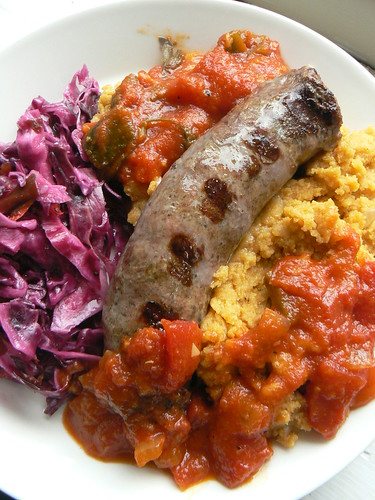
In this Episode
World Cup Boerewors (Farmer's Sausage)
Pap
Train Smash
Rhubarb Fluff
Remembering Merle Ellis, "The Butcher"
Where are you going to be when the World Cup kicks of this Friday? I'll be at work, but hopefully they'll have the TV tuned to the matches. I'm not a huge sports fan, but I really like international sporting events. They are a chance to get away from my small suburban existence and see a diverse world coming together to play. They are also a chance to eat and celebrate and a chance to learn how different peoples party. Every corner of the world has its sausage, so during this year's World Cup, I want to discover a few.
I start with host country South Africa. Boerewors is the sausage that is standard for any Braai (Barbecue)in South Africa. Sounds kinda like bratwurst huh? I don't how how to prounouce it but I suspect if you use an Austrailian dialect with a Dutch accent you'll come pretty close. Boer means farmer and wors is sausage (btw Bratwurst means grilling sausage). I found many different recipes, but most were made up of a combo of beef and pork heavily spiced with coridaner. I found a couple of formulas that called for bacon, I think that sounds good but since I was out (I'm curing some right now), here's what I did:

900g/2lbs Chuck roast coarsely ground
450g 1lb Pork shoulder coarsely ground
21g salt
10g Coriander, whole (toasted if possible)
5g Black pepper
2 whole cloves
pinch of mace
5g milk powder (optional helps with texture)
60ml/2oz/ 1/4cup white wine vinegar
60ml/2oz/ 1/4cup water
Grind spices with salt and beat into meat mixture. Then add milk powder and liquids, continue to beat until mixture comes together, maybe two minutes.

Stuff into hog casings, leave in a continuous length. Try to let the sausage rest a day before grilling. Cut to desired lengths and cook.
So what to serve with sausage? Starch and gravy of course. Mielie Pap is just as it sounds, corn porridge, or as it's pronounced in Italy, polenta. As in many cultures, pap is a staple in South African cuisine. White corn meal is typically used, but all I had was yellow so I went with that. I softened one chopped medium onion in some butter then added three cups of chicken stock and a teaspoon of salt. Once it came to a simmer I slowly stirred in 2 cups of corn meal. And I stirred and I stirred. once it started to bubble, the mixture seemed smooth but kinda bland.
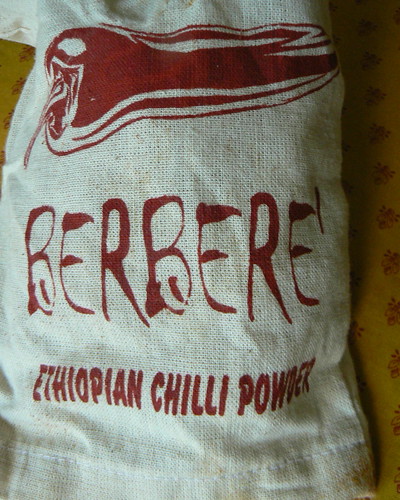
I unstrapped and removed my Authentico Foodie Helmet, and phoned in East Africa for a little help. Berbere, a spice mixutre from Ethiopia consists mainly of dried red chillies, cardamom, cumin, fenugreek, coriander and other lesser variations. It's a spicy red curry powder. A tablespoon of this added a nice zip to my porridge.
Finally a sauce. I hate saying gravy, but it is what it is. I found several different names for the same sauce: Sous, Sjeba, Sheba, and my favorite, Train Smash. It's onions, tomatoes, green peppers and brown sugar stewed together. Sounds a lot like ketchup. But it's not, it's better.
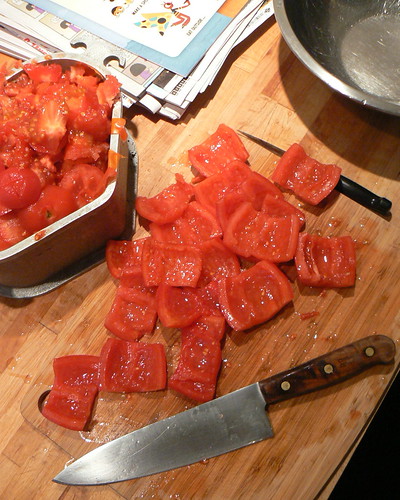
I chopped up a bunch of tomatoes, added that to 3 cups of tomato sauce and put it into a hot satoir that contained one chopped onion, already softened. I roasted and skinned a poblano pepper, chopped it and threw it in. Once that mixture had cooked down a bit, I drew it out with about a cup of stock added a bouquet garni and let it simmer some more. For the sweetness I dribbled in a couple of ounces of molasses, for zip I sprinkled some hot paprika. After an hour it was about right. Let's eat.
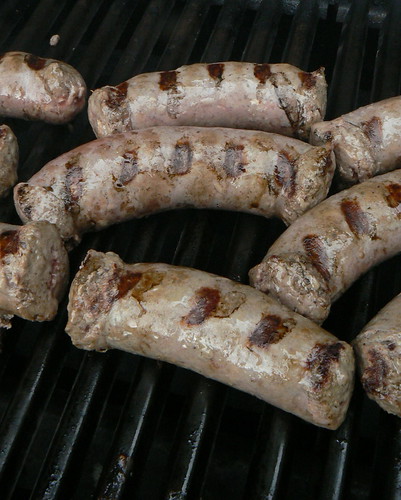
For desert we shuffled back to the Midwest for a seasonal favorite strawberry shortcake. Remember when strawberries were seasonal?
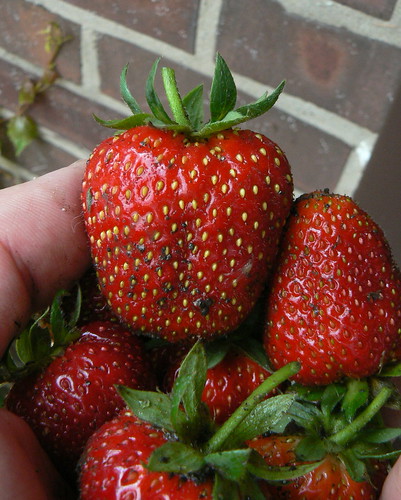
Our patch has gotten large enough to produce berries in quantity. Bonne Femme made up some shortcakes, and I made some rhubarb fluff to go with. For the fluff I chopped up some rhubarb, sprinkled it with a heavy hand of sugar, some salt and a splash of tequila. I let it sit overnight in the fridge.

The next day I threw it in a pot with some water and cooked it down. The mash went for a whirl in the Cuisinart and then strained.
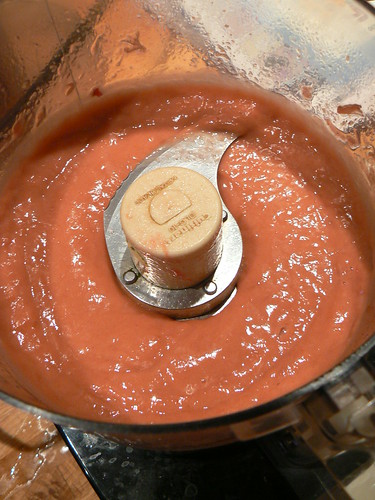
I folded the purée into some whipped cream and voilà, fluff.
let's eat.
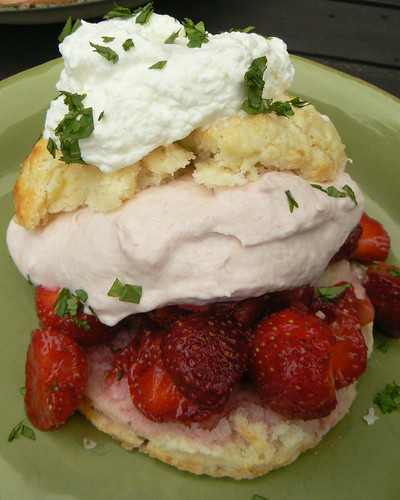

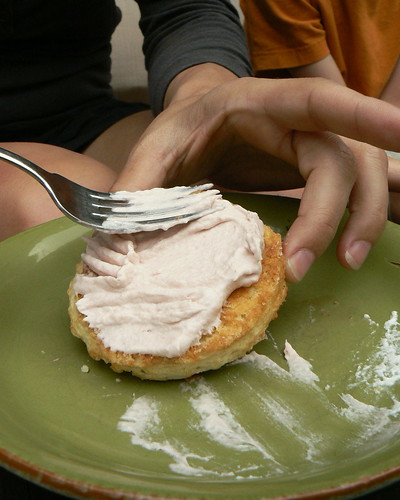
A fine feast for World Cup. What are you going to fix?
Merle Ellis, The Butcher, 1934-2010.
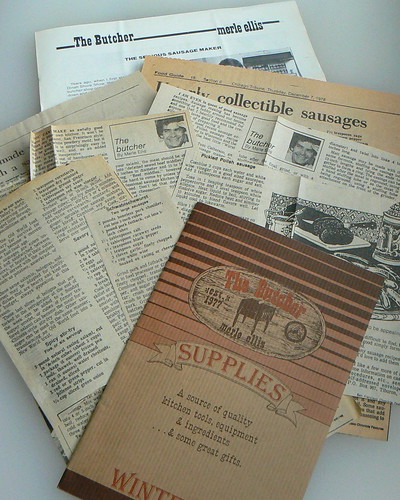
When I was researching boerewors, the first recipe I found was in an old newspaper article written by Merle Ellis. In the 70's and 80's he wrote a nationally syndicated column titled "The Butcher." Can you imagine a weekly feature dedicated to home butchering and sausage recipes? He wrote hundreds of articles. He wrote several books and had a TV show called "Cut-up and Cook." He was the Original Rock Star Butcher. What I liked most about is writing was his plain straight forward approach and he could tie a recipe to a story. His recipes had soul, something that's missing from a lot of modern cookbooks. Mr. Ellis passed away in January (read the Obituary here). I became familliar with him when I found the items pictured above stuffed into two separate sausage books at used books sales. It's hard to find information about him on the internet, he stepped out of the lime light many years ago. On the blog I'm Mad and I Eat, there's a nice account of a chance meeting the author had with Mr. Ellis, and a recent comment on the the post The Ultimate Breakfast Sausage Recipe attests to kind interactions with Mr. Ellis as he worked behind the counter at a market in Petaluma, CA.
I have a copy of his first book Cutting-Up in the Kitchen. In it he dedicates the book to his wife:
"To Neva, Without her help it could have not been done. Without her it wouldn't have been worth doing."
Food and love forever, we should all be so lucky.
Cheers.

Resources used in this article (Links to WorldCat.org)
Another good Boerewors recipeThe Sausage-Making Cookbook by Jerry Predika
About Berbere, Cooking with Herbs and Spices by Andi Clevely et AL.
General Information about SA cuisine, The Oxford Companion to Food by Alan Davidson

